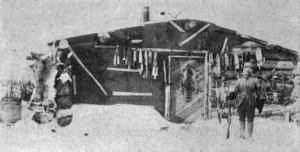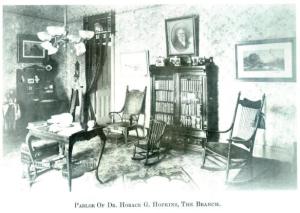Many (white) observers over the years believed that insanity was rare among Native Americans. Their conclusion was born out during the Indian Bureau survey that tried to assess the need for a special asylum for insane Indians; among the thousands and thousands of Indians living on reservations, fewer than a hundred could be identified with mental problems. Continue reading
Another Sad Twist
The argument can certainly be made that very few patients at the Canton Asylum for Insane Indians were what might be called “classically insane,” with complete disassociation from reality, a complete change in personality, or a complete inability to function within their traditional society. Continue reading
Reply in Kind
Until much later, inspections of the Canton Asylum for Insane Indians tended to focus on its physical assets rather than the patients (see last two posts). When Inspector Breid made his detailed comments about the state of the asylum’s floors in 1912, Superintendent Hummer’s reply to his concerns was just as detailed.
Focus Of Inspections

Interior, First Floor, Staircase and Gallery, Welfare Island, Insane Asylum, New York, New York County, courtesy Library of Congress
The Canton Asylum for Insane Indians was inspected many times throughout its life. However, inspectors tended to focus on “things” rather than people. In a January, 1912 report that discussed some sewer problems at the asylum (see last post), Inspector Jacob Breid also discussed–in detail–the physical condition of the building. Continue reading
New Year, New Problems
New years may imply fresh starts, but for the superintendent of the Canton Asylum for Insane Indians, a new year often meant the same old–or brand new–problems to deal with. The asylum was inspected by Supervisor Jacob Breid in January, 1912. A new sewer had just been completed, but did not work; water was not flowing correctly through one of the manholes about 1,500 feet away from the buildings. Continue reading
Food Scarcity

Cheyenne-Arapaho Ration Card Used During the Time of the Land Run, courtesy Oklahoma Historical Society
Winter had always been a time of scarcity for both agricultural and nomadic peoples. Even when crops were good and supplies safe, winter generally meant fewer food choices and dwindling stores of edibles that could not be replenished until spring arrived.
Native Americans faced extreme threats to their food supply by the twentieth century: Continue reading
Winter As a Time of Reflection
In most earlier cultures, life slowed during the winter months; people could not plant seed in frozen ground, days were short and dark, and most agricultural tasks were complete. As in today’s practice of contemplation at the New Year, native peoples used winter as a time to reflect on the important events of the previous year. Continue reading
Canton’s Early Roots
Though the city of Canton was small compared to East Coast standards, it was an up and coming community for the far West. Almost as soon as Congress created Dakota Territory, its new territorial legislature began establishing counties. The legislature established Lincoln County (where Canton is located) during its first session in 1862. Continue reading
Local Pride in Canton Asylum
Though insane asylums were not common institutions anywhere, citizens in most locales were delighted to have them situated nearby. Asylums meant jobs, payrolls that workers might spend in town, and an ongoing need for supplies that local merchants could try to meet. Continue reading
The Insane as News Items
Though early alienists did a great deal to de-stigmatize insanity and help families feel better about seeking help for their mentally ill members, insanity was still a delicate subject that most families preferred to keep private. Asylum superintendents understood this. Continue reading







